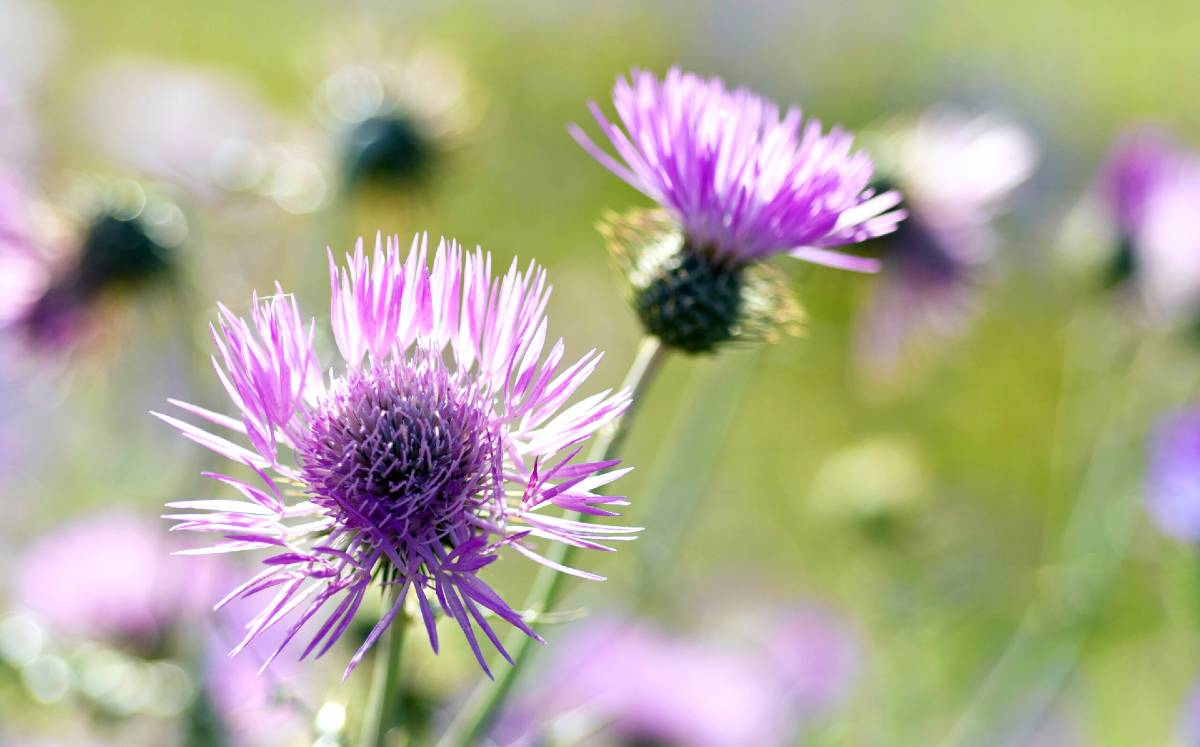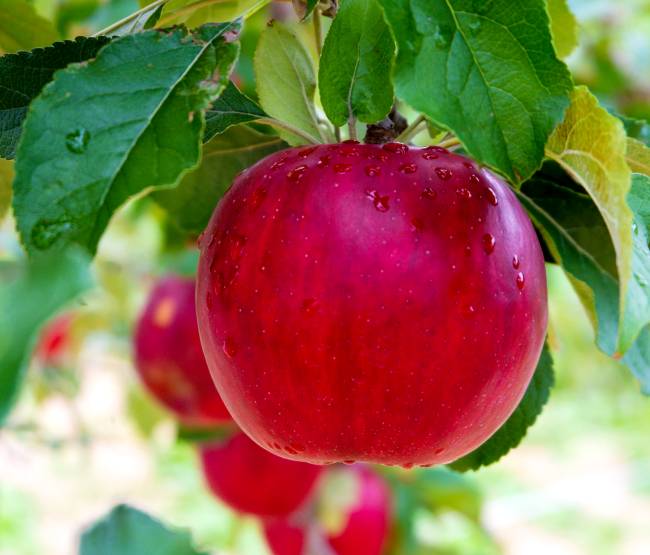Dogs who suffer from seasonal allergies desperately need relief.
The around-the-clock itching is miserable (does it even wake you up at night?). Or maybe your dog pants all the time and is constantly restless and stressed. How about a greasy, stinky coat? Or maybe he’s licked his skin raw.
We know this is rough for pet-parents, too — it’s miserable to see your pup struggling so much with these uncomfortable symptoms.
But you actually have more power than you might think — and you’ve come to the right place for some absolutely vital insights straight from Dr. Bessent. Follow this easy, step-by-step guide — so BOTH you and your dog can get some much-needed relief!

On The Agenda
1. Start With Omegas
We’re crazy about omegas. They benefit the entire body — from the heart to the skin to the immune system!
(That means that every dog and cat — allergic or not — should have omegas in the bowl).
And here’s the extra good news for allergic pups: these incredible omegas can supply dogs with essential nutrients that are CRUCIAL for powering through allergic reactions and returning to homeostasis (which is the ultimate goal).
When the body returns to homeostasis, symptoms like itching can resolve. So if you’ve got an itchy dog — whether it’s from allergies or something else — essential omega fatty acids are an absolute must.
But which omegas are essential?
There are two types of omegas you need to add to the bowl: omega 3s and omega 6s.

Omega 3s (EPA and DHA) have anti-inflammatory properties and provide powerful support for the immune system (which plays a key role in allergies).
It’s crucial that you choose meat or marine-based Omega 3s with EPA & DHA fatty acids (think grass-fed meats, salmon, and krill) rather than the plant-based alternative ALA (think hemp seed or flaxseed). EPA & DHA are active, ready-to-use forms, which means that your dog’s body can actually reap the benefits (whereas ALA isn’t ready-to-use, so your dog has to convert it, which is extremely inefficient and far less beneficial to your pup).
Omega 6s (GLA) hydrate the skin and help the body produce its own nourishing, protective oils. Make sure you choose GLA fatty acids (found in Borage Oil and Evening Primrose Oil) for supporting your allergic pet. Most pets lack GLA since their bodies can’t produce it on their own, which makes it especially vital that you add it to the bowl.
Pretty much any time omegas are involved, we’re going to chant add it to the bowl! And for dogs with mild allergy symptoms, omega 3 and omega 6 might be exactly what they need to help their body work through the allergies and return to their normal tail-wagging, frisbee-loving, face-slobbering selves!
This makes omegas an ideal first step — because they help build a foundation of support for allergic dogs… and every dog.

2. Use Herbs To Get To The Root Of Severe Symptoms
Here’s the thing about allergic reactions: they aren’t the allergen’s fault. Rather, they are a result of the body having a hyper-sensitive reaction to harmless allergens (in other words, mistaking the allergens as scary invaders and dramatically overreacting).
With that in mind, consider our approaches for treating allergies:
Allergy medications work by suppressing symptoms — which can be extremely effective and offer much-needed relief in the short-term. So in emergency situations, allergy medications absolutely have a place at the table.

BUT. The real goal is to work toward a long-term solution that gets to the root of the issue and focuses on balancing, harmonizing, and supporting the immune system to reach homeostasis.
How, you ask?
Enter herbs. This is where it’s extremely beneficial to take a holistic approach to give your pet the support they so desperately need.
Give your dog a combination of cooling, calming, and yin-tonifying herbs to offer much-needed relief.
These herbs help surface symptoms by cooling the skin and address the root of the issue by balancing the body’s defenses.
Heat-draining herbs
Heat-draining herbs or cooling herbs can naturally decrease and drain the excessive heat and inflammation that develops into those uncomfortable symptoms.
Yin-tonifying herbs
Then, with tonifying herbs, you can help replenish fluids faster, effectively helping protect the fluids in the body and encouraging the body’s immune response to return to its normal, balanced state.

Calming Herbs
The itch is constant and incessant for an allergy pet, as you may have seen first-hand. So they scratch and claw trying to get to it, licking and gnawing so much that they rub areas raw. You can use a combination of calming herbs to quiet and soothe your allergy pet, so they aren’t compelled to scratch that itch and make their symptoms worse.

Ideally, you should start all of these herbs 2-3 months before allergy season even begins. This gives the herbs some time to build up in your dog’s system.
But even if allergy season is already underway, still add those herbs! And in the meanwhile, if your dog needs quick relief from severe symptoms, this is the time we wouldn’t blame you if you need to use allergy medications.
Just remember — the real goal is to build an allergy regimen that will provide your dog with a solid foundation for rebalancing the body long-term.
This will be key for next allergy season… and the one after that. (Learn more with “Seasonal Allergies: 5 Takeaways from A Conversation with A Holistic Vet”).
3. Add Milk Thistle

When your dog has a hyper-sensitive reaction, the body becomes hot and inflamed. So our goal is to soothe the body and bring down the heat.
Detoxifying plays a key role here because detoxifying the body helps bring down excess heat and inflammation. This matters tremendously for the allergy dog because it’s the heat and inflammation that causes the uncomfortable, hot, itchy, greasy symptoms.
And this is where the liver comes in. The liver is the detoxifying organ and helps the body clear toxins (chemicals, pesticides, medications, etc.).
So, to help detoxify and protect the liver, every allergy dog should have Milk Thistle in their daily routine. It’s a hepatoprotective herb that supports liver health throughout the process of the allergic reaction and helps regenerate dead and dying liver cells.

Plus, if your dog is taking allergy medication, the Milk Thistle can help the liver flush out the harsh chemicals. Though medications like antihistamines and corticosteroids really can provide your pup with relief, they do come with some drawbacks — including harsh chemicals, which can actually harm the liver over time and must be flushed out.
When you add Milk Thistle, you give the liver some much-needed support for clearing out toxins and ultimately soothing allergies.
4. Focus On Cooling Foods
Think about those allergy symptoms — that itching, licking, panting, restlessness, and stress. Again, our goal is to reduce the heat.
This means that allergy dogs benefit from cooling foods — in other words, foods that help turn down the heat and help the body rebalance.
Foods with warming, cooling, or neutral properties can help the balance of hot and cold in the body. Every dog (and human) is different, and you can choose foods to help support the body accordingly. This is called food energetics — and we use it in our everyday lives (and may not even realize)!
Think about the foods you crave on a chilly fall day — a hearty stew, root vegetables, a filling turkey dinner, a bowl of oatmeal. These are warming foods. And you certainly wouldn’t want them on a sweltering summer day (bring on the mangos and watermelon, please and thank you).
So now, back to your dog. Allergy dogs are HOT and need cooling foods. If you feed them hot foods like chicken and lamb, you’re basically pouring gasoline on an already-roaring fire.
Instead, add cooling foods to the bowl to help balance your dog’s hot, inflamed body — that includes meat proteins (like duck and rabbit) as well as cooling fruits and vegetables (like apples, watermelon, broccoli, spinach, and cucumber). When you add cooling foods like these, you’re gently nudging your dog’s body back to a balanced, healthy state.

5. Prepare When Possible / React When Necessary
If you only remember one thing, let it be this: don’t wait! Start applying what you’ve learned NOW — even if it’s not currently allergy season for your dog. When you have a proactive allergy regimen in place, you’ll be READY for the next allergy season and will be equipped to help resolve allergies quicker.
- Start by building a solid foundation. Focus on nutraceuticals like Omega 3 (EPA & DHA) and Omega 6 (GLA) year-round.
- Add those herbs to bring down heat and inflammation 2-3 months before allergy season and throughout allergy season
- Add Milk Thistle to help detoxify and protect the liver.
- Feed a diet of cooling foods throughout allergy season to help your hot, inflamed pup and rebalance the body.

Getting real, lasting relief for your allergic dog can take some time — but it’s so worth it! Building a proactive allergy regimen will have such a lasting impact and will help your pup be her best dog for years to come!
Share this Post

Dr. Chris Besent
Chris Bessent, DVM, MSOM, Dipl. OM, L.Ac. has over thirty years of experience in veterinary medicine including certificates in veterinary acupuncture, veterinary chiropractic and veterinary Chinese herbology. Imbued with Eastern philosophy and the knowledge that food is the foundation of health, Dr. Bessent also received her degree in veterinary nutrition and began to formulate recipes fit for a carnivore from nothing but whole foods. Currently, she divides her time between the Simple Food Project and Herbsmith, both of which are owned and operated out of her facilities in southeastern Wisconsin.

Hayley - Content Writer
Hayley is a freelance writer based in Northern California. (Writing for the Herbsmith is her favorite, but don't spread it around.) She enjoys riding horses, taking road trips, and eating grilled cheese sandwiches. Her foster dogs have mixed feelings about the spinach she keeps trying to sneak into their bowls.

Kayla - Editor
Kayla is the Content Editor for Herbsmith. She has a cat named Professor Cat-Faced Meowmers, who goes by Kitty, and a goof of a dog, named Duck. She stays busy biking trails, playing board games, and searching for the next best craft beer.




